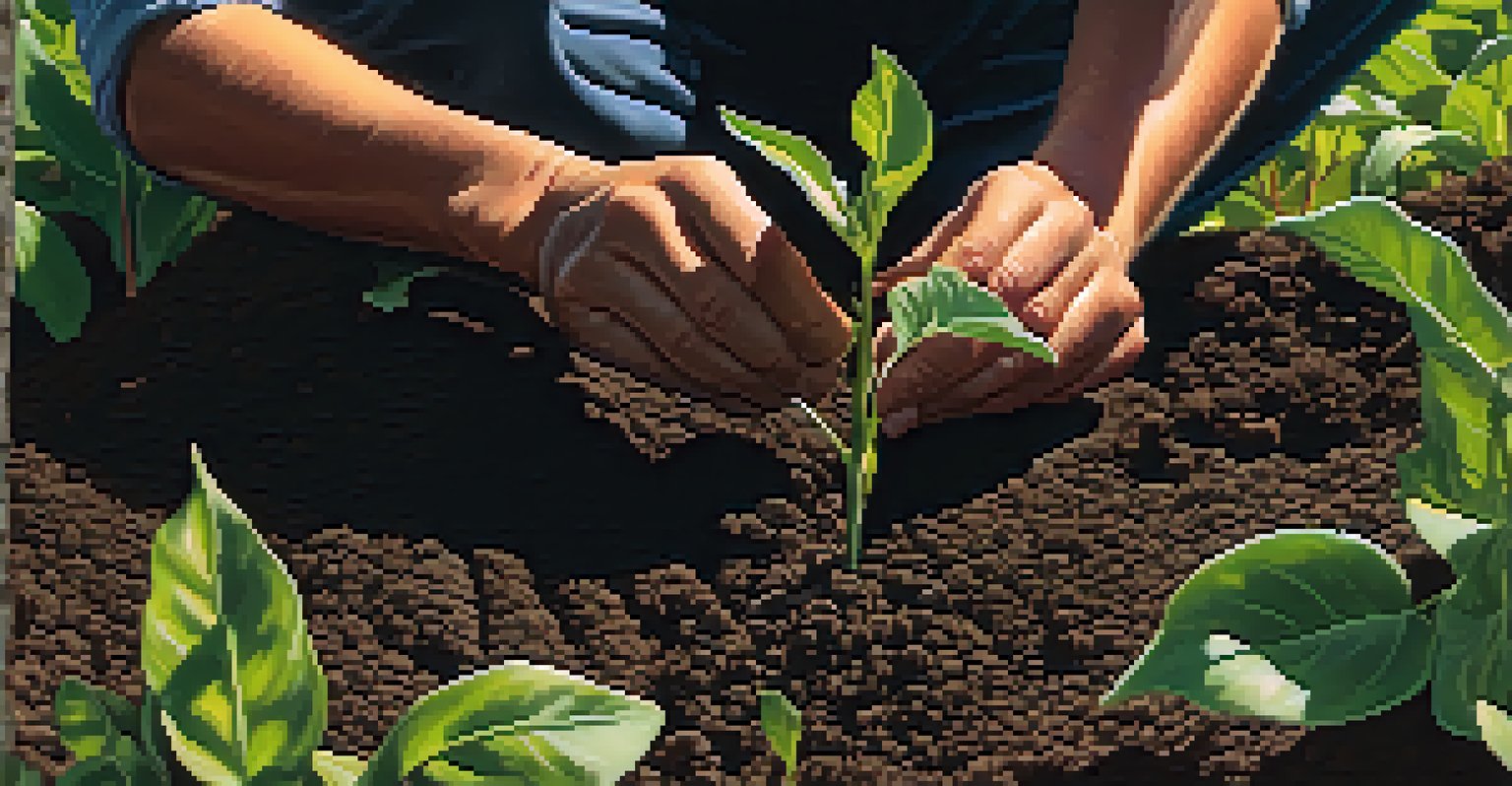The Impact of Agroforestry on Biodiversity and Carbon Sequestration

Understanding Agroforestry and Its Practices
Agroforestry combines agriculture and forestry to create sustainable land-use systems. This practice integrates trees with crops and livestock, promoting a diverse ecosystem. Think of it as a harmonious partnership where plants and animals work together, benefiting both the land and the farmer.
The greatest threat to our planet is the belief that someone else will save it.
By incorporating trees, agroforestry not only boosts agricultural productivity but also enhances soil health. The roots of trees help stabilize the soil, preventing erosion and improving water retention. This practice mimics natural ecosystems, fostering resilience against climate change.
Moreover, agroforestry can take many forms, such as alley cropping, silvopasture, or forest farming. Each method offers unique advantages, making it adaptable to various environmental conditions and farming needs. This versatility is key to its success in promoting biodiversity.
Biodiversity: A Natural Benefit of Agroforestry
One of the most significant impacts of agroforestry is its role in promoting biodiversity. By integrating various plant and animal species, these systems create habitats that support wildlife. Imagine a vibrant ecosystem where birds, insects, and other creatures thrive alongside crops.

The presence of diverse species can lead to improved pollination and pest control, benefitting crop yields. For instance, certain plants attract beneficial insects that help control pests, reducing the need for chemical pesticides. This natural balance fosters a healthier agricultural environment.
Agroforestry Boosts Biodiversity
By integrating diverse plant and animal species, agroforestry creates habitats that enhance ecosystem resilience.
Additionally, agroforestry can help conserve native plant species that might be threatened by conventional farming practices. By creating a mosaic of habitats, agroforestry encourages the preservation of genetic diversity, which is crucial for ecosystem resilience.
Carbon Sequestration: A Climate Solution
Agroforestry plays a vital role in carbon sequestration, a process that captures and stores carbon dioxide from the atmosphere. Trees are particularly effective at this, absorbing CO2 during photosynthesis and storing it in their biomass and the soil. This can significantly mitigate climate change impacts.
Sustainability is not a destination; it’s a journey.
Research has shown that well-managed agroforestry systems can sequester more carbon than conventional agricultural practices. For example, a study found that agroforestry can store up to 30% more carbon in the soil compared to monoculture farming. This is a win-win for both farmers and the planet.
Furthermore, by increasing soil organic matter through perennial plants, agroforestry enhances soil health, leading to better crop resilience. Healthier soils can better withstand droughts and floods, creating a more sustainable agricultural future.
Socioeconomic Benefits of Agroforestry
Agroforestry doesn't just benefit the environment; it also has significant socioeconomic advantages. Farmers who adopt these practices often see increased yields and improved livelihoods. This additional income can enhance community resilience and reduce rural poverty.
Moreover, agroforestry systems can provide multiple products, such as fruits, nuts, and timber, diversifying income sources for farmers. This diversification acts as a safety net against market fluctuations, ensuring that farmers can sustain their operations even in tough times.
Agroforestry Mitigates Climate Change
This practice effectively sequesters carbon dioxide, helping to combat climate change while improving soil health.
Community involvement in agroforestry projects fosters social cohesion and knowledge sharing. As farmers collaborate, they exchange best practices and innovations, strengthening community ties and building a more sustainable future together.
Challenges Facing Agroforestry Implementation
Despite its numerous benefits, agroforestry faces challenges in implementation. One significant hurdle is the initial investment required for establishing these systems. Farmers may be hesitant to adopt new practices without clear, immediate financial returns.
Additionally, there can be a lack of knowledge or training on agroforestry techniques among farmers. Without adequate resources and support, the transition to agroforestry may be daunting, especially for those accustomed to conventional farming methods.
Policy frameworks and government support play a crucial role in promoting agroforestry. Encouraging sustainable practices through incentives and education can help overcome these challenges and pave the way for broader adoption.
Agroforestry and Climate Change Adaptation
Agroforestry serves as a powerful tool for climate change adaptation, enhancing the resilience of agricultural systems. By diversifying crops and integrating trees, farmers can better cope with unpredictable weather patterns. This adaptability is essential in an era of climate uncertainty.
For example, the shade provided by trees can protect crops from excessive heat and reduce moisture loss during dry spells. This natural shading can lead to healthier plants and improved yields, even in challenging conditions.
Economic Gains from Agroforestry
Farmers adopting agroforestry often experience increased yields and diverse income sources, strengthening community livelihoods.
Moreover, agroforestry systems can help manage water resources more efficiently. Trees improve water infiltration and reduce runoff, leading to better water availability for crops. This is particularly important in regions facing water scarcity, making agroforestry a key strategy for sustainable agriculture.
The Future of Agroforestry in Sustainable Development
Looking ahead, agroforestry holds immense potential for sustainable development. As the global population grows, the demand for food and resources will intensify. Agroforestry offers a viable solution by maximizing land productivity while preserving ecosystems.
Integrating agroforestry into national and global agricultural policies can drive significant change. By prioritizing sustainable practices, we can ensure food security while protecting our planet for future generations.

Ultimately, embracing agroforestry is not just about improving agricultural practices; it's about fostering a holistic approach to land management that respects nature and promotes biodiversity. This commitment to sustainability will be crucial for addressing the pressing challenges of our time.